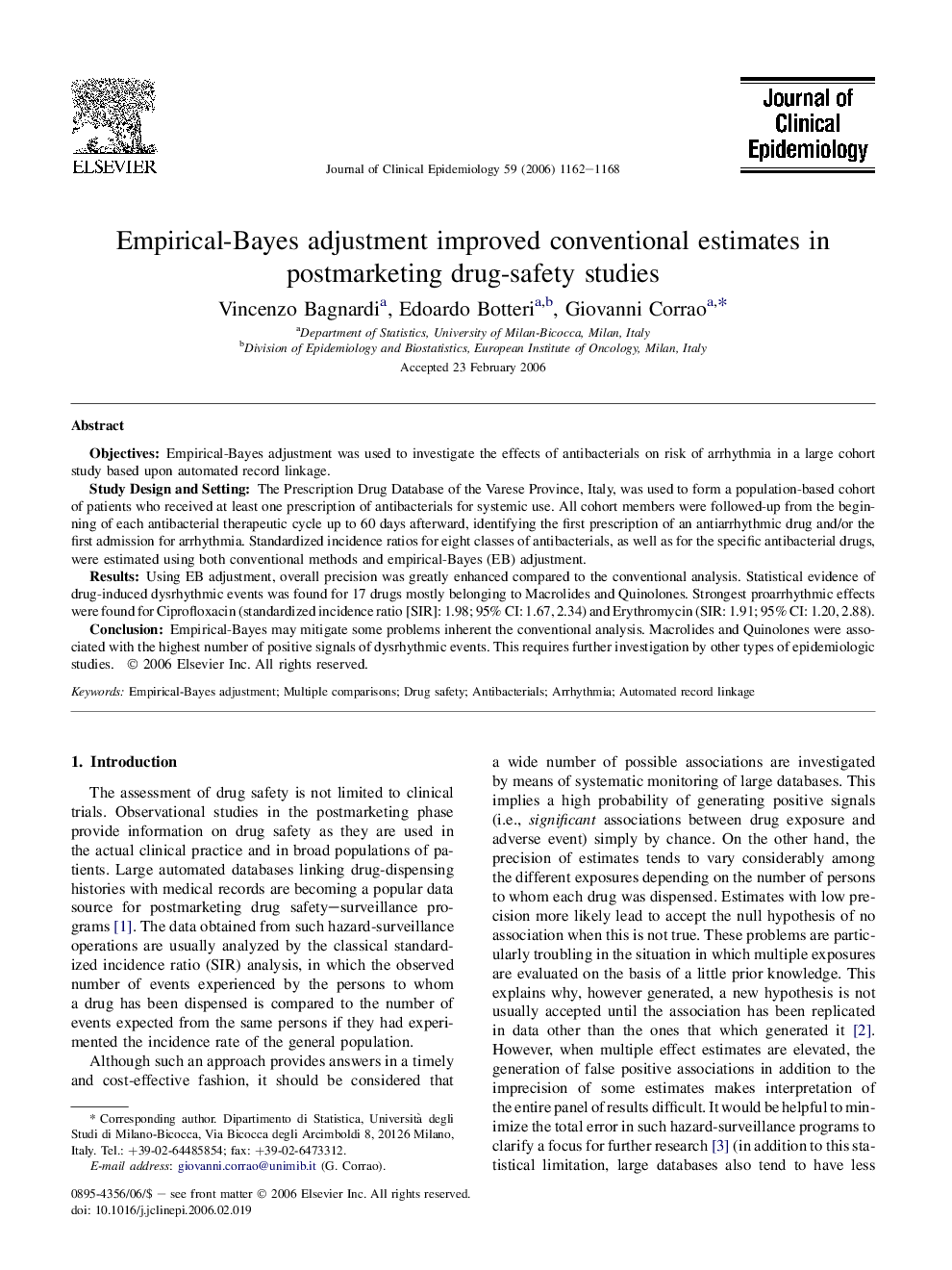| Article ID | Journal | Published Year | Pages | File Type |
|---|---|---|---|---|
| 1083211 | Journal of Clinical Epidemiology | 2006 | 7 Pages |
ObjectivesEmpirical-Bayes adjustment was used to investigate the effects of antibacterials on risk of arrhythmia in a large cohort study based upon automated record linkage.Study Design and SettingThe Prescription Drug Database of the Varese Province, Italy, was used to form a population-based cohort of patients who received at least one prescription of antibacterials for systemic use. All cohort members were followed-up from the beginning of each antibacterial therapeutic cycle up to 60 days afterward, identifying the first prescription of an antiarrhythmic drug and/or the first admission for arrhythmia. Standardized incidence ratios for eight classes of antibacterials, as well as for the specific antibacterial drugs, were estimated using both conventional methods and empirical-Bayes (EB) adjustment.ResultsUsing EB adjustment, overall precision was greatly enhanced compared to the conventional analysis. Statistical evidence of drug-induced dysrhythmic events was found for 17 drugs mostly belonging to Macrolides and Quinolones. Strongest proarrhythmic effects were found for Ciprofloxacin (standardized incidence ratio [SIR]: 1.98; 95% CI: 1.67, 2.34) and Erythromycin (SIR: 1.91; 95% CI: 1.20, 2.88).ConclusionEmpirical-Bayes may mitigate some problems inherent the conventional analysis. Macrolides and Quinolones were associated with the highest number of positive signals of dysrhythmic events. This requires further investigation by other types of epidemiologic studies.
